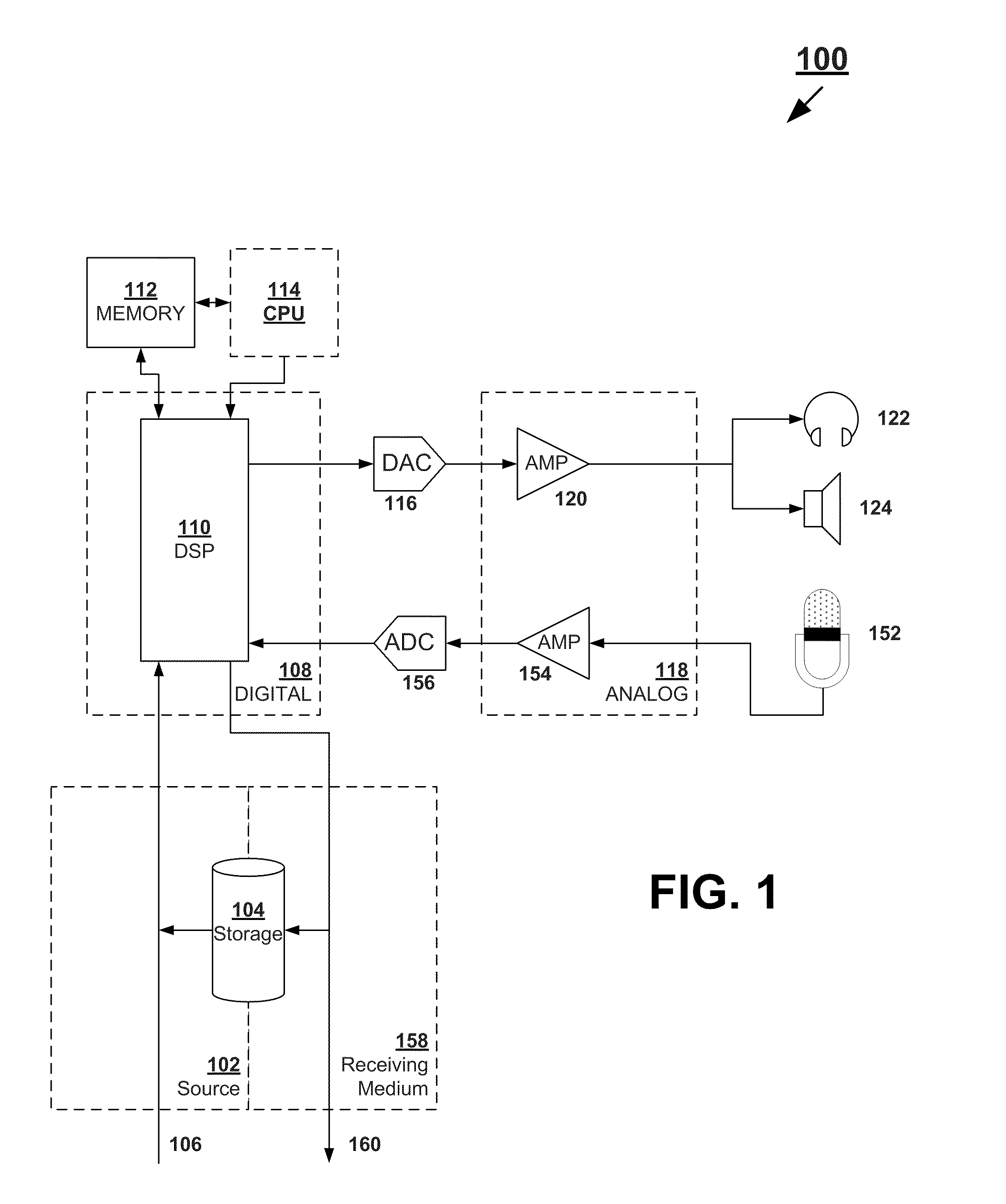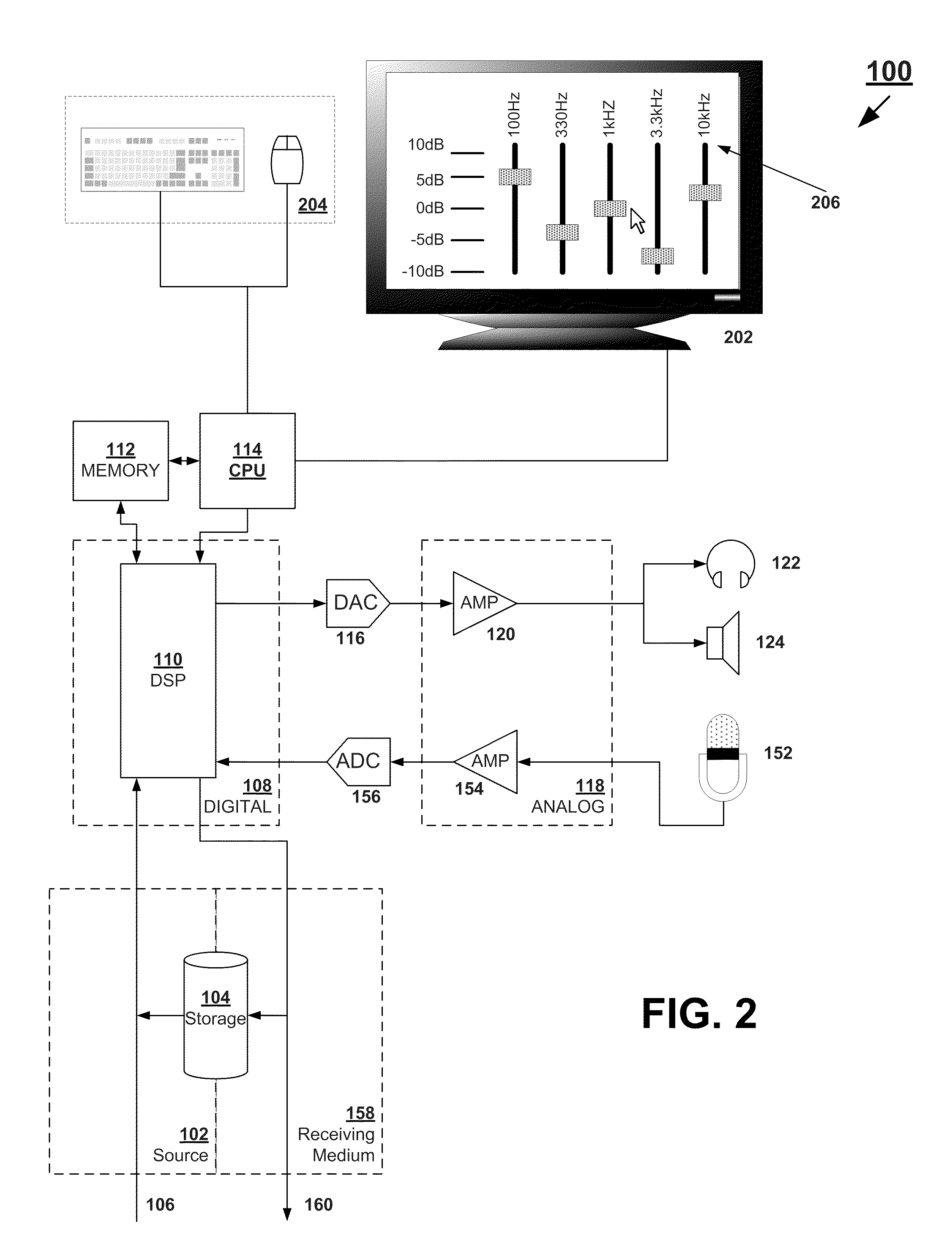Systems and methods for transducer calibration and tuning
a technology of calibration and tuning, applied in the field of audio transducers, can solve the problems of small number of controls, inability to accurately reproduce the signal presented, and inability to accurately reproduce the signal in the inherent nature of audio transducers
- Summary
- Abstract
- Description
- Claims
- Application Information
AI Technical Summary
Problems solved by technology
Method used
Image
Examples
Embodiment Construction
[0044]A detailed description of embodiments of the present invention is presented below. While the disclosure will be described in connection with these drawings, there is no intent to limit it to the embodiment or embodiments disclosed herein. On the contrary, the intent is to cover all alternatives, modifications and equivalents included within the spirit and scope of the disclosure.
[0045]As mentioned above, the DSPs included in most modern computer systems and many personal electronic devices can be used to compensate for transducer inaccuracies. In addition, they can be used to enhance the quality and safety of the listening experience. In the case of built-in devices, the characteristics of a transducer are known, so compensation and enhancements can be made.
[0046]However, even when transducers are built-in devices, manufacturers often substitute different speakers for the intended speaker. This substitution often takes place without consideration of the operating system which ...
PUM
 Login to View More
Login to View More Abstract
Description
Claims
Application Information
 Login to View More
Login to View More - R&D
- Intellectual Property
- Life Sciences
- Materials
- Tech Scout
- Unparalleled Data Quality
- Higher Quality Content
- 60% Fewer Hallucinations
Browse by: Latest US Patents, China's latest patents, Technical Efficacy Thesaurus, Application Domain, Technology Topic, Popular Technical Reports.
© 2025 PatSnap. All rights reserved.Legal|Privacy policy|Modern Slavery Act Transparency Statement|Sitemap|About US| Contact US: help@patsnap.com



